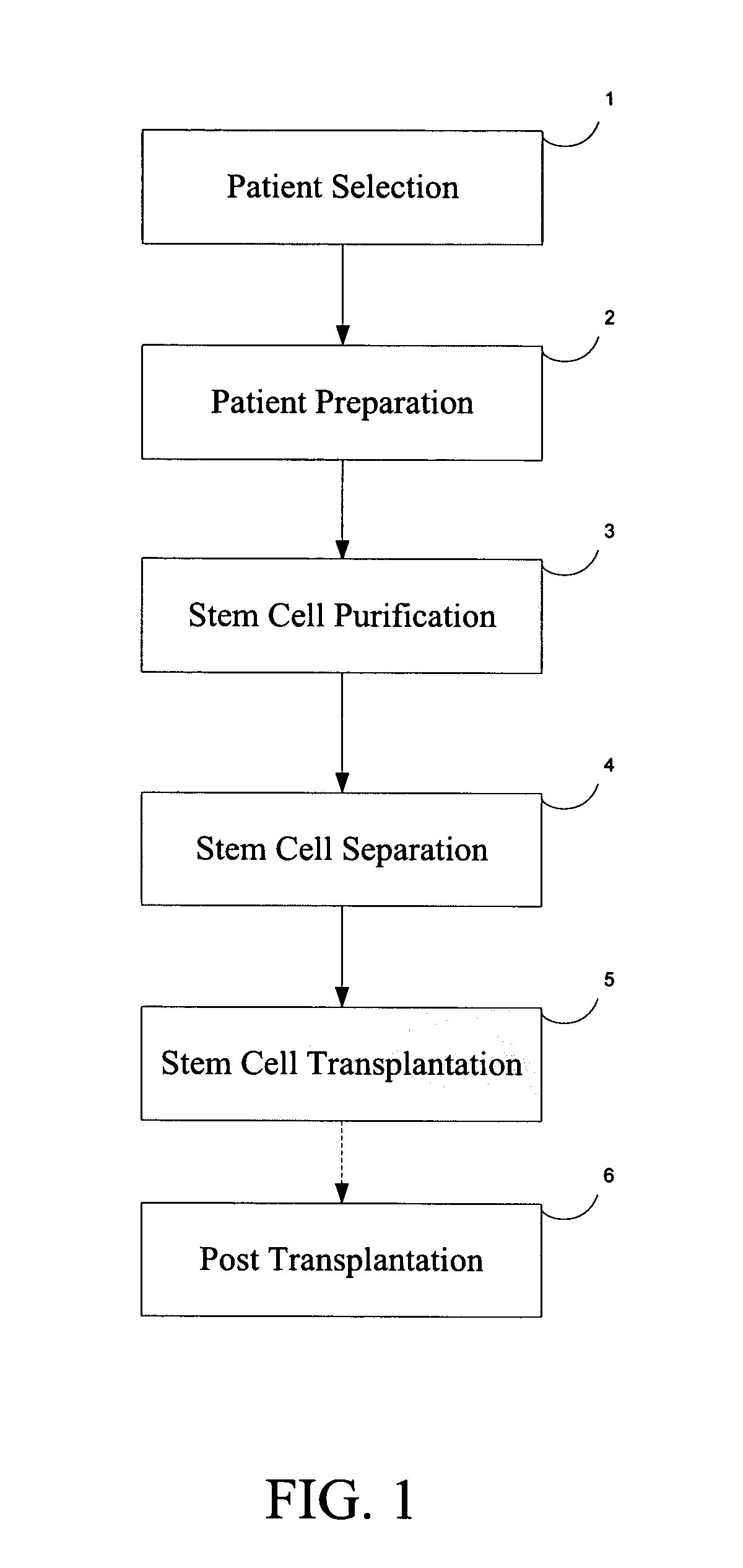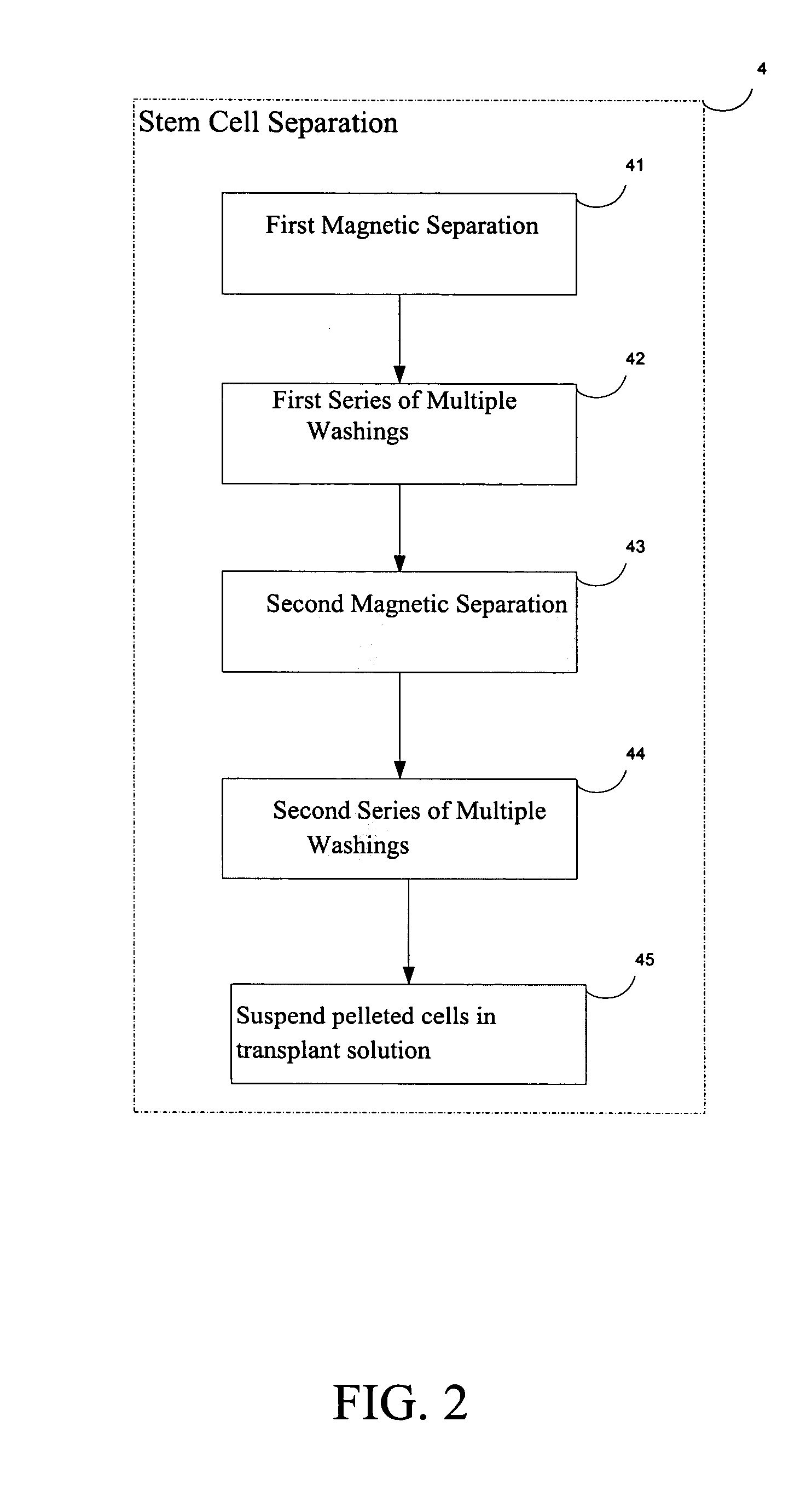Procedure to regenerate articular cartilage in human advanced osteoarthritis using autologous hematopoetic stem cell transplantation
a technology of autologous hematopoetic stem cells and cartilage regeneration, which is applied in the field of osteoarthritis treatment, can solve the problems of increasing health care utilization and costs, physical disability, and largely unresolved progression of oa, and achieves the effects of reducing inflammation, restoring full joint mobility and function, and reducing inflammation
- Summary
- Abstract
- Description
- Claims
- Application Information
AI Technical Summary
Benefits of technology
Problems solved by technology
Method used
Image
Examples
Embodiment Construction
[0018] The present invention is a procedure to regenerate cartilage in a human damaged by osteoarthritis by transplanting autologous hematopoetic stem cells from the same human subject.
[0019]FIG. 1 is a block diagram of the generalized steps involved in the procedure to regenerate cartilage according to the present invention, which includes the following steps: 1) Patient Selection; 2) Patient Preparation; 3) Autologous hemotopoetic stem cell (AHSC) purification; 4) Autologous hemotopoetic stem cell (AHSC) separation; 5) Autologous hemotopoetic stem cell (AHSC) Transplantation; and 6) Post-Transplant Procedure. Each of these steps is herein described in more detail and a description of the outcome is provided.
[0020] Step 1: Patient Selection
[0021] Proper patient selection entails careful screening. The patient candidate for the present procedure should conform to a medical profile with the following aspects: A) patient should have medium to advanced (stages II to IV) OA; B) patie...
PUM
| Property | Measurement | Unit |
|---|---|---|
| paramagnetic | aaaaa | aaaaa |
| temperature | aaaaa | aaaaa |
| homogenous | aaaaa | aaaaa |
Abstract
Description
Claims
Application Information
 Login to View More
Login to View More - R&D
- Intellectual Property
- Life Sciences
- Materials
- Tech Scout
- Unparalleled Data Quality
- Higher Quality Content
- 60% Fewer Hallucinations
Browse by: Latest US Patents, China's latest patents, Technical Efficacy Thesaurus, Application Domain, Technology Topic, Popular Technical Reports.
© 2025 PatSnap. All rights reserved.Legal|Privacy policy|Modern Slavery Act Transparency Statement|Sitemap|About US| Contact US: help@patsnap.com


